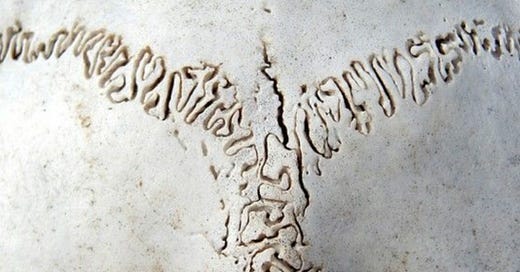COMPANION NOTES: on the nature of bone
Welcome to this set of resources that accompanies the FOOTPRINTS content. You'll find useful links, playlists, image collections, plus journaling prompts, poetry and an invitation to a read-along.
While the entry point to FOOTPRINTS was getting to know the anatomy of your feet, I allowed my thoughts to range over the nature of our bones, of gravity and grounding.
To contemplate anatomy experientially, means we take the facts we learn from books, apps, videos, even dissection material, and explore and authenticate it in our body. We accumulate a first-person perspective of the tissues, structures and systems of the body.
It’s a creative process and highly personal. It invites us to reflect on language, imagery, stories and myth, and any and all associated ideas that come up in our enquiries. I hope my collection inspires you to create your own unique resources.
ANATOMY
We are all aware at some level of having a skeleton (I think - that might be a massive assumption)and the first thing to do might be to remember it is not simply a framework for our body, it is a system, and it is busy carrying out different jobs that contribute to the well-being of our body as a whole. This 20 minute video from Sam Webster (an enthusiastic educator of all things anatomy) is great for getting a handle on the dynamic nature of bone biology, and you’ll find other related clips as well. If you come away with anything, I hope it is with a fresh view of your skeleton as being fully vibrant and alive at a cellular level.
Now, when we look at skeletons, we might see a collection of objects of all shapes and sizes. What we might not immediately see is the accompanying collection of spaces, or joints. The skeleton therefore is a curation of objects and spaces that lacks a certain wholeness until we weave in the connective tissues for example, the joint capusles, periosteum, ligaments and tendons (I won’t go into the big topic of fasica here).
Sam Webster also mentions periosteum in the video, and I find it a really useful structure to embody for a sense of unity in my skeleton. It’s a fibrous sheath that covers and links together the outer surfaces of bones like a tight body suit (there is also something called endosteum that lines the inner bone). The weave of the periosteum blends with the weave fo the joint capusles and ligaments, offering a sense of coherance and stability to the moving bones.
Speaking of which, the joints are the spaces where movement happens, where bones form changing relationships with each other.




